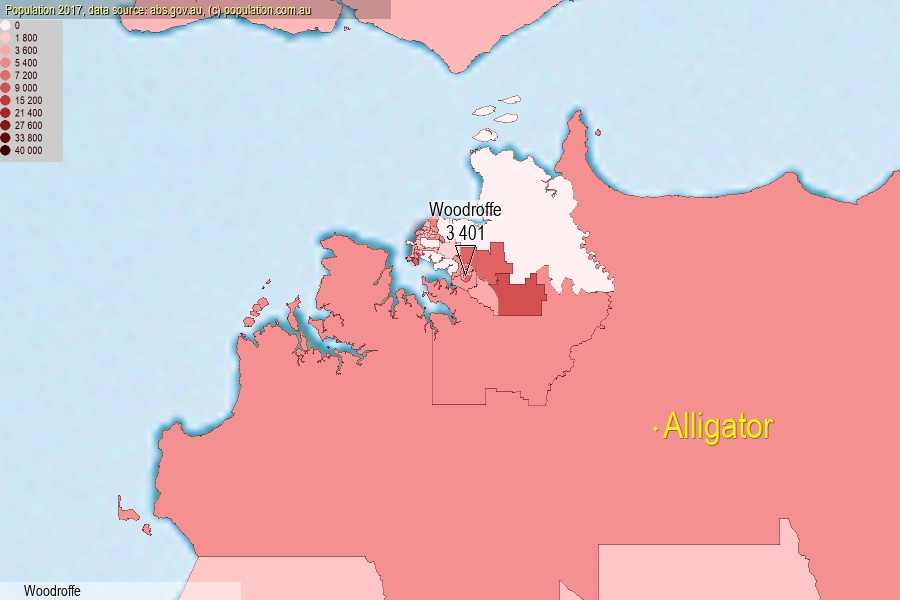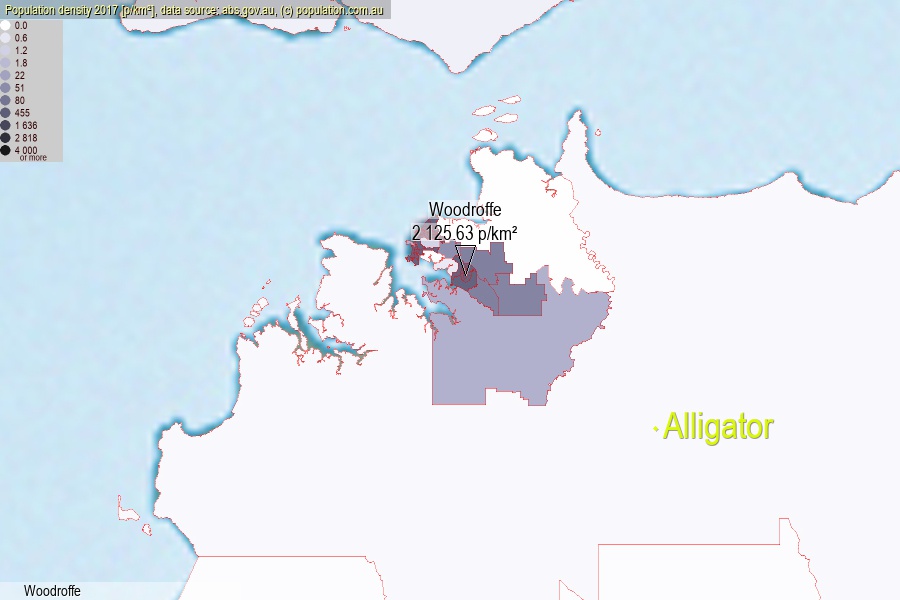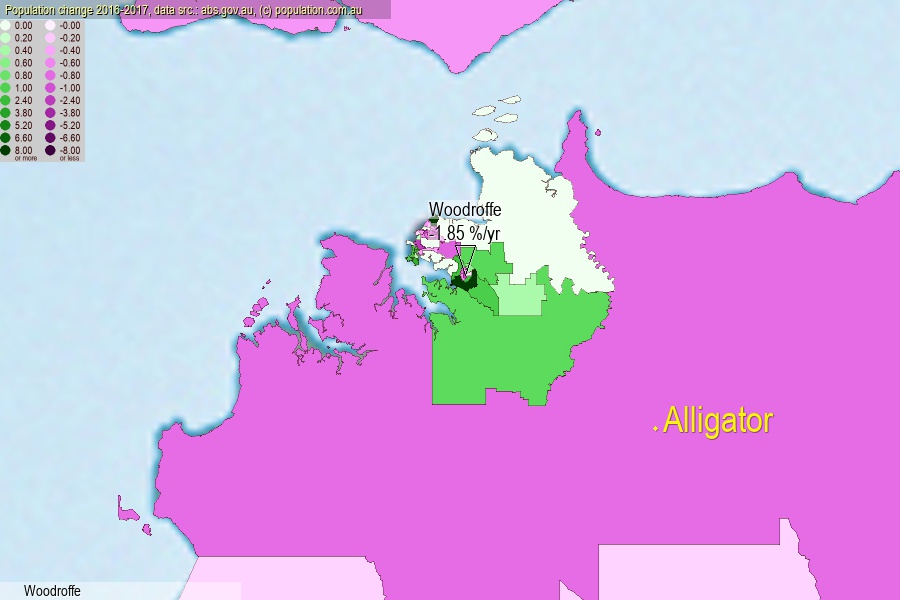 population.com.au
population.com.auLast official estimated population of Woodroffe (as Statistical Area Level 2) was 3 401 people (on 2017-06-30)[2]. This was 0.01% of total Australian population and 1.379% of NT population. Area of Woodroffe is 1.60 km², in this year population density was 2 125.63 p/km² . If population growth rate would be same as in period 2016-2017 (-1.85%/yr), Woodroffe population in 2025 would be 2 930. [0]



Click to enlarge. Woodroffe is located in the center of the images.
Population [people], population density [p./km²] and population change [%/year] [2]
View borders » (new window) [4]
[1991-1992] +28.86 %/Yr.
[1992-1993] +36.34 %/Yr.
[1993-1994] +15.94 %/Yr.
[1994-1995] +20.11 %/Yr.
[1995-1996] +16.55 %/Yr.
[1996-1997] +7.23 %/Yr.
[1997-1998] +3.99 %/Yr.
[1998-1999] +3.48 %/Yr.
[1999-2000] +2.56 %/Yr.
[2000-2001] +2.94 %/Yr.
[2001-2002] -0.35 %/Yr.
[2002-2003] -1.07 %/Yr.
[2003-2004] -0.41 %/Yr.
[2004-2005] +0.83 %/Yr.
[2005-2006] +0.30 %/Yr.
[2006-2007] -0.60 %/Yr.
[2007-2008] +0.36 %/Yr.
[2008-2009] +0.47 %/Yr.
[2009-2010] -0.22 %/Yr.
[2010-2011] -0.82 %/Yr.
[2011-2012] 0.00 %/Yr.
[2012-2013] +0.75 %/Yr.
[2013-2014] -1.48 %/Yr.
[2014-2015] -1.28 %/Yr.
[2015-2016] -2.20 %/Yr.
[2016-2017] -1.85 %/Yr.
[0] Calculated with linear interpolation from officially estimated population
[1] Read more about SA2 and Australian Statistical Geography Standard (ASGS) on abs.gov.au
[2] Population data from Australian Bureau of Statistics (Population and density: 2017; change: 2016-2017)
[3] Digital Boundaries: Australian Statistical Geography Standard (ASGS) 2016.
[4] Border coordinates are simplifyed using Ramer-Douglas-Peucker algorithm.